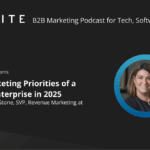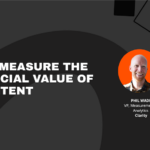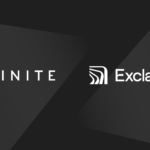Stakeholder management. That area of project management that nobody really enjoys thinking about. It can be tedious, often complicated and very quickly suck the joy from an otherwise exciting project. That energy and momentum that all new projects begin with can fast be lost as the cogs in the wheel grind to a halt due to poorly defined client side stakeholder management.
As an agency we are often working with marketers as our main client side stakeholder. Our projects regularly have clear marketing focused KPIs associated with them and need to align with strategic marketing goals. But although a marketer is the main project stakeholder, or so we think, marketers need to navigate an often complex sea of colleagues who also have needs from a project – sales teams, content teams, legal, board directors, the CEO, third party agencies such as content or SEO agencies – the list can go on.
Here are some thoughts on how marketers and agencies can work together to limit the impact of complex stakeholder environments on a project risk register, based on the experience of delivering hundreds of projects with client side teams ranging from one stakeholder to 20+ stakeholders. The focus here is on the design stage of a project, but the principles can be applied across project stages.
The problem
To begin with we need to acknowledge that some digital projects are complex. From the very offset, there is nothing ‘easy’ about delivering large projects into a fast paced ever changing digital world, over often long periods of time, with multiple project stages, processes and people involved.
To make things more complex, design is intrinsically subjective. A stakeholder’s perspective of ‘good design’ is influenced by personal feelings, tastes and opinions, and so with every stakeholder that wants to express their opinion, things get infinitely more complicated.
Most commonly we see marketers setup to fail right from the very beginning of a project. Why? A lack of autonomy.
Take this as a rough example of a common situation:
- A client’s marketing manager is named as the primary project stakeholder, and the person Agency should turn to for input and direction throughout the project.
- After including all the stakeholders during kickoff meetings and workshops, Agency gather everything together, complete the discovery phase and begin designing.
- Agency spend many days producing design work, gathering feedback and making revisions based on the marketing director’s input. Agency are soon ready to begin the build.
- Agency ask for final design sign off, and then hear the news that all agency project teams have nightmares about:
“I just need to run everything past the CEO and some other colleagues then we should be ready to go.”
Suddenly the whole project hangs in the balance, control of the project is lost and the design process can end up back at square one as the CEO and others have their own vision for how a site should look based on their own design preference.
The implications of this can be huge – a frustrated client side team, a tired and fed up agency team and a project that is behind schedule and over budget.
The solution
If the project is being driven by a marketing stakeholder they should be given the respect, trust and autonomy to make decisions.
The bottom line is that design by committee does not work. Put the same piece of design in front of 10 people and 5 may love it, 3 may think its OK and 2 may hate it.
Ultimately if the CEO is going to be signing off on the project, they should be managing the agency throughout the project. If you’re reading this as a CEO, then decide: do you want to oversee the project yourself, or do you trust your team to deliver the project without you? Whether you like it or not, it really needs to be one or the other if you want your project delivered on time and on budget.
Here are some further practical tips on how to stop complex stakeholder environments throwing projects off course:
- Ensure all stakeholders have inputted to the initial brief, before agency selection even happens. All stakeholders need to feel involved from the start, and if they are confident the brief includes their requirements they won’t feel as much of a need to be looking over the shoulder throughout the rest of the project.
- Marketers and the agency should be proactive in spending time with colleagues in other areas of their organisation to capture requirements and understand their needs.
- Marketers should get all the foundations in place before beginning a project, ensuring everyone agrees on the entirety of the marketing strategy before the agency starts working with it to prevent the goals posts from moving half way through the design process.
- Expectations should then be managed, and everyone should understand why the project is happening and what success looks like. It’s OK to remind colleagues that this isn’t about them or their design preferences – this is about your users or customers and unlocking success for your organisation.
- Marketers should consider creating a framework – an internal one page document to be shared with colleagues outlining roles and responsibilities, the stages at which their colleagues will be consulted and who is responsible for decision making. This will limit the surprise factor for everyone later in the project.
- All stakeholders should be on the same page with regards to the goals of the project. When everyone is aligned here, it shifts the focus from being about personal design preferences to ‘will this achieve our goals?’ and helps unify a shared vision for project success.
- A ‘product owner’ should be nominated for the project. This might be the marketer, but either way this person should be the voice of the project, and be given autonomy to have the final say.
- As an agency we always provide clear guidance on how feedback should be given to us – what kind of feedback is constructive and in what format it should be provided to us to be actioned efficiently.
- Keep communication open and frequent, but think carefully about exactly what is shared with who and when. An agency should be able to help advise on this.
- Good agency account management and project management comes into its own in these environments, allowing everyone to be heard, but for decision making to happen cleanly and efficiently.









